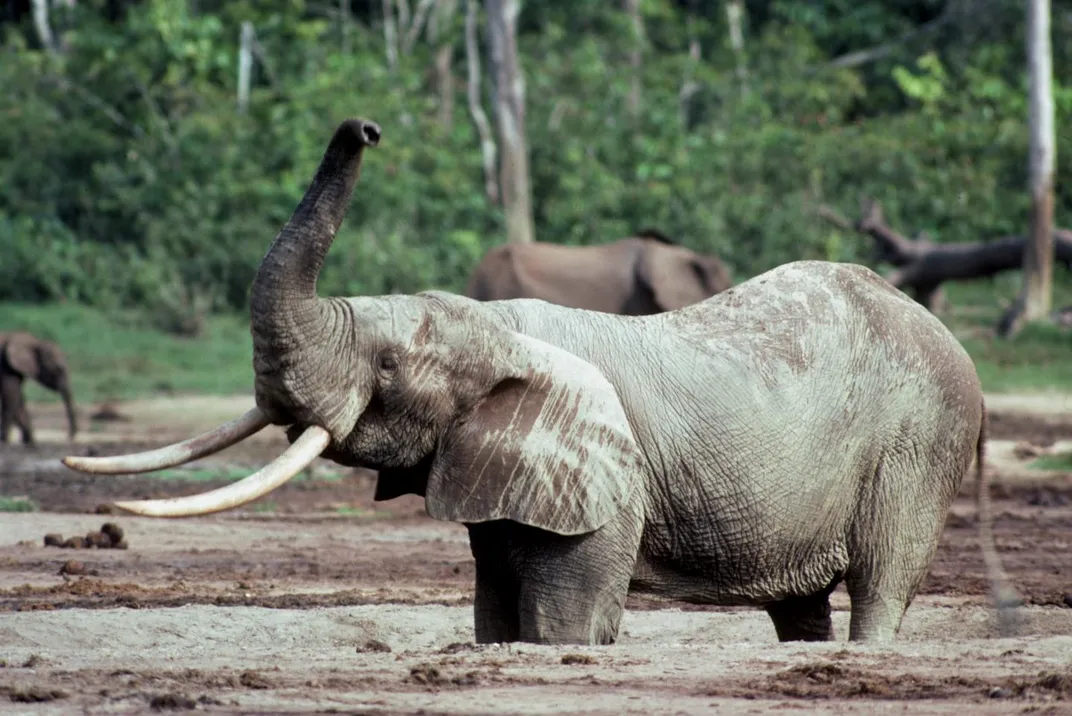Ivory From 16th-Century Shipwreck Yields Clues to African Elephants’ Decline
Researchers extracted DNA from tusks found in the wreckage of the “Bom Jesus,” a treasure-laden vessel that sank in 1533
:focal(720x534:721x535)/https://tf-cmsv2-smithsonianmag-media.s3.amazonaws.com/filer/f8/1e/f81ea071-5a25-4854-9aed-ea47d9ba6c00/tusks.jpg)
In 1533, a Portuguese trading ship sank off the coast of Namibia with 40 tons of cargo, including more than 100 elephant tusks, on board. Now, nearly 500 years later, scientists who’ve analyzed the ivory say it holds clues to both 16th-century commerce and humans’ lasting impact on African elephants.
“The cargo is essentially a snapshot of a very specific interaction that took place at the formative stages of globalization,” study co-author Ashley Coutu, an archaeologist at the University of Oxford, tells the New York Times’ Rachel Nuwer. “The power of doing historic archaeology is the ability to link those findings to modern conservation.”
An interdisciplinary effort involving archaeologists, geneticists and ecologists, the paper was published Thursday in the journal Current Biology. By extracting genetic material from the tusks’ cells, the researchers were able to identify the ivory’s source as forest elephants. The team then analyzed mitochondrial DNA to determine that the elephants whose tusks sank with the ship came from 17 distinct herds in West Africa.
“Elephants live in female-led family groups, and they tend to stay in the same geographic area throughout their lives,” lead author Alida de Flamingh, a biologist at the University of Illinois at Urbana-Champaign, tells Victoria Gill of BBC News. “We were able to reconstruct complete mitochondrial genomes from these really old samples.”
When the scientists compared their findings to genetic information about African elephants today, they could only identify 4 of the 17 herds. This decline probably reflects the extinction of elephant families long threatened by the ivory trade and the destruction of their habitats.
African forest elephants are smaller than their savanna cousins. Today, they continue to face threats from humans seeking ivory. According to the African Wildlife Foundation, poachers have killed more than 60 percent of the animals over the past decade; the species now occupies just a quarter of its historic range. Most forest elephants live in jungle environments, but a chemical analysis of the carbon and nitrogen isotopes found in the 16th-century tusks showed that they once lived in a mixed woodland and grassland savanna.

The fact that the ivory came from elephants in so many herds suggests that different West African communities supplied the tusks to Portuguese traders, Paul Lane, an archaeologist at the University of Cambridge who was not involved in the work, tells Science News’ Maria Temming. Researchers are unsure whether the traders acquired the coveted ivory from multiple ports along the African coast or from one port with access to a large trading network.
Workers in a coastal diamond mine discovered the Bom Jesus in 2008. The oldest known shipwreck in southern Africa, the treasure-laden vessel contained gold coins, navigation equipment and crew members’ personal possessions.
“There are dinner plates, cutlery and trinket boxes, as well as all the copper ingots, coins and ivory in the cargo,” Coutu tells BBC News. “It is an incredible find, incredibly well preserved.”
The researchers said the tusks remained in good condition thanks to the weight of the metal ingots, which pressed the ivory into the seabed, as well as a sea current that keeps the water off the Namibia coast cold. These factors allowed for the extraction of the nearly 500-year-old DNA.
According to National Geographic’s Roff Smith, the Bom Jesus set sail from Lisbon on March 7, 1533, with 300 or so sailors, soldiers, merchants, priests, nobles and enslaved individuals on board. About four months later, the cargo ship ran afoul of a huge storm off of the southwestern African coast. Given the lack of human remains found in the wreck, archaeologists theorized that “many if not most of those aboard made it to land.”
John Poulsen, an ecologist at Duke University who was not involved in the study, tells the Times that the research reflects “incredible detective work.”
He adds, “The conclusions of the study are important for understanding human history, elephant genetic diversity and ecology and biodiversity conservation, while also innovating a methodological framework to analyze museum collections of ivory.”
/https://tf-cmsv2-smithsonianmag-media.s3.amazonaws.com/accounts/headshot/Livia_lg_thumbnail.png)
/https://tf-cmsv2-smithsonianmag-media.s3.amazonaws.com/accounts/headshot/Livia_lg_thumbnail.png)